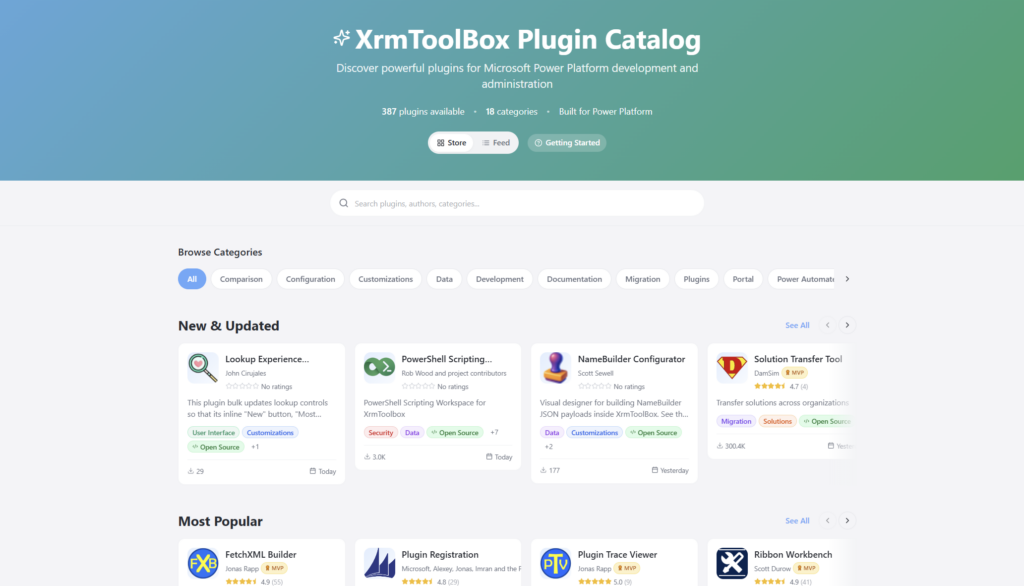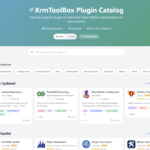Now Reading: Dynamics 365 – Industry Focus is not BS
-
01
Dynamics 365 – Industry Focus is not BS
Dynamics 365 – Industry Focus is not BS

I first heard Microsoft floating the “Industry Focus” concept to partners shortly after Office 365 launched. It seemed pretty clear that this cloud shift was going to eliminate a lot of existing revenue for partners. I felt back then, that the “Industry Focus” concept was something that Microsoft cooked up as a talking point designed to shift your focus from the fact that your revenue was about to hit the skids.
Your Idea of Industry Focus, is Not It
Most partners heard Industry Focus and thought “yeah, we already do that sort-of”. I think many struggled to see how that motion alone was going to refill their emptying wallets. For the most part, specialization by industry was not something most I.T. focused partners thought about. I heard one partner chirp up that his “Industry Focus” was SMB. In fact, the idea of focusing means conversely, shutting down your efforts for all other opportunities… how was this going to grow your business?
Macro vs Micro
SMB may well be a “Focus” area, but it is at the macro level. Clearly SMB have more in common with one another than they do with Enterprise customers, and many partners have built a business around those stark differences. But even within SMB there are pretty significant differences between a 5 user company and a 50 user company, and more still between that and a 250 user company. There are many undefined steps between Macro and Micro. You could say that SMB is still at the macro level, but focusing on SMB customers between 10 and 99 users is… well, it’s still Macro. Further focusing on customers in the 10-99 user range, in the Construction Industry is… well it’s not Micro yet, but I’ll give you that it is not Macro. Focusing on Electrical Contractors in the 10-99 user range… now you are getting to Micro, but still have a ways to go.
Let’s Check the Codes
There are a couple of Industry Classification code sources, there is the Standard Industry Classification (SIC Code), and here in North America we have the more modern North American Industry Classification System (NAICS Code). I will use the NAICS for my example, in the NAICS every business on the planet falls within one of 20 Top Level Categories. Construction for example, is a top-level category, its NAICS number is 23. Two digits is extremely Macro. Within this two digit category are subcategories with 3 digits, within each of those are subcategories of 4 digits, etc. Electrical Contractors don’t surface until you hit 5 digits. Even at that 5 digit level, there are some definitions within there, that might even be considered further segments like:
- Airport runway lighting contractors
- Fiber optic cable (except transmission line) contractors
- Alarm system (e.g., fire, burglar), electric, installation only
- Highway, street, and bridge lighting and electrical signal installation
- Audio equipment (except automotive) installation contractors
- Home automation system installation
- Lighting system installation
- Cable television hookup contractors
- Telecommunications equipment and wiring (except transmission line) installation contractors
- Computer and network cable installation
- Traffic signal installation
- Environmental control system installation
- Cable splicing, electrical or fiber optic
So obviously these would have to be considered Micro Verticals. And notice that these classification systems do not take into account company size at all, so you could further multiply these significantly based on that.
I am not suggesting that in order to proclaim to have an Industry Focus that you should only service “Airport Runway Lighting Contractors”. But within just the Construction Classification alone there are 209 sub-classes, each a unique business type and specialization.
What is an Addressable Industry Vertical?
Funny you should ask, Microsoft is working on trying to sort out this very question also. When I think “Addressable”, I am thinking about a level at which you can attack. On the assumption that there are not enough “Airport Runway Lighting Contractors” to build a business around, we need to remove a digit… or 2, to get to a market size large enough to own and make a living in. But hold on, “Airport Runway Lighting Contractors” are probably quite different from “Audio Equipment Installation Contractors”, even though they are both next to each other, way down at the 5 digit level. The key at this level is not focusing on what makes them different, but rather what makes them the same. Clearly they have more in common with each other than either of them does with a Dental Practice. I would assume for example that they both have trucks, I don’t recall seeing a fleet of trucks at my dentist’s office. Some other areas of commonality would be the need for field people, inventory, scheduling, etc. We may be able to identify quite a few common requirements here, yet we are far enough down the stack that there is a lot of shared terminology and processes. What if we jump up another level, is that still addressable in a specialized way?
Expanding Addressable to Viable
Clearly we could learn everything we need to know, to build out an absolute expertise around the requirements of “Airport Runway Lighting Contractors”, but there are not enough of them to be viable. I am assuming this, maybe this is a huge industry that I am simply ignorant to (Note to self: Research number of “Airport Runway Lighting Contractors”). As we move up the stack to the next highest category, we still see a lot of commonalities, but the differences are starting to emerge also. For example if we were to compare Electrical Contractors to say, Drywall Contractors we would see quite different requirements at a higher level, than we saw between subcategories of Electrical Contractors. But again, let’s focus on what they have in common, and see if there is enough. In both cases they are most often sub-contractors, which means they typically are both hired by General Contractors. They both still have trucks and field people, so it feels like there is enough commonality to claim a specialization at this level, and a big enough market. Let’s jump up to the next level. Now we are bringing in things like Heavy Construction: Bridge, Power plant and Highway builders. The differences are now outweighing the commonalities, so we went too far, at least from this direction. I am sure Heavy Construction is an addressable Industry as well, but not from where we started looking in this exercise. So we can safely say that Construction Related Trade Sub-Contractors, of all stripes, would fit the definition of a Viable, Addressable, Micro Industry, or at least my definition, which I will coin a “VAMI“.
So How Many VAMIs are There?
I have not done this analysis across the NAICS, but I would guess that there are hundreds of VAMIs. How many can you attack simultaneously? That would be a factor of Marketing and size of your organization. For a smaller firm, you could not take on too many VAMIs and be able to proclaim true expertise for any one of them. The partner who proclaimed his Industry Focus was SMB, obviously knows nothing about anyone’s business in more than a completely generic sense… “they are smaller”. This partner adds no value to the conversation, other than “we’re smart, we’ll figure it out.” Not the best marketing slogan. For a small partner, your best bet might be to completely “own” only one VAMI. You could certainly kick the guy who claims “SMB is his Focus” ass up and down in front of a customer in your VAMI. Within about three VAMI specific questions, he would look like a blubbering fool, and run out the door, leaving you will that ever so slight smile. Would this customer pay you a premium for your VAMI specific knowledge? You bet.
A Ridiculous Idea from Microsoft
Okay, I don’t know that this is the Microsoft doctrine on this, but I have heard several times from them about this idea of a “light industry veneer” applied over a out-of-the-box business application. To me this feels disingenuous; kinda like re-marketing a “Curling Iron for Bald Men”. Changing the term “Customer” to “Patient” does not suddenly make Dynamics 365 a Healthcare Solution. If it did, I could bang out a hundred Industry Solutions tomorrow. But terminology, as we all well know, is only a fraction of what makes a solution an Industry Solution. Microsoft damn well knows this too, and they should cease this effort to oversimplify it to scared partners. There is a lot of work to do this, like it or not.
“Steve, When are you going to get off the Verticals already?”
I hear ya. I mentioned in my last post this idea of a “Grace Period”. Typically this brings to mind that amount of time after your payment is actually due for something, and the time that creditor brings the hammer down on you. I think the entire Microsoft channel is currently in a Grace Period with Microsoft, and possibly the business community at-large. You have a finite, yet undefined, amount of time to get your ass into the cloud. If everybody does make this move, then the next Grace Period will result because there will simply be too many generic cloud partners. You will have another finite, yet undefined, amount of time to get Industry Focused, otherwise you will fade into the abyss of blubbering fools. How long do you have? You are already running out of time, if you started right now!
The post Dynamics 365 – Industry Focus is not BS first appeared on Steve Mordue MVP.















